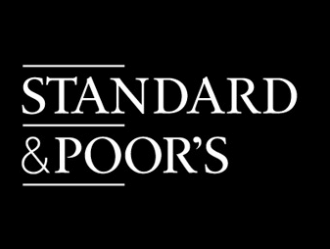
It appears yesterday’s speech by RBA Assistant Governor (Financial Markets), Guy Debelle, has done little to allay the fears of the ratings agencies about the Australian banks’ heavy reliance on offshore wholesale funding.
In today’s Australian Financial Review (AFR), Standard & Poors (S&P) issued its second warning in as many months on the banks funding risks. From S&P warns of big four’s offshore risk (AFR, 29 June 2011):
The AA rating of Australia’s major banks is under a cloud after a global credit agency warned they borrow too much money on unstable international markets.
S&P also said the prospect of soft property prices, a dour outlook for business investments and the high Australian dollar were worrying signs for the banks…
Releasing a report card into banks across Asia, S&P credit analyst Gavin Gunning said Australia’s banks stood out in the region because of their heavy dependence on offshore funding.
“Because Australian… banks are large borrowers on international markets, dislocation in those markets [due to Europe’s debt problems] would lead to higher costs of funds for the banks”, Mr Gunning said.
He predicted that property prices would be flat but warned banks would take a hit if the market turned for the worse.
“The emergence of a less likely scenario, such as a major correction in property prices … clearly would affect major banks’ asset quality”, he said.
“As well as the potential for a softer property market, other risks we are monitoring in the context of the major banks sector include … a caution outlook for business investment and managing the effect of a high Australian dollar on some industries”…
The cost for banks to borrow on [international] markets, which soared during the financial crisis, has increased in recent weeks as a result of the debt crisis in Greece…
…any move by S&P to cut the banks down from AA would likely have major implications, pushing up the cost of funds they borrow on global markets and putting upward pressure on home loan interest rates.
S&P is considering changes to its ratings criteria to place a greater emphasis on funding issues…
Mr Gunning said: “We have the Australian major banks on ‘stable’, so that would indicate that the most likely direction for the four ratings is to continue to enjoy that AA status under our current rating criteria.
“Unambiguously, however, funding and liquidity is the relative soft spot for the major banks”.
Back in May, Moody’s ratings agency stated that the Government’s implicit guarantee of the banks’ wholesale funding and well as the explicit deposit guarantee is worth two ratings notches. When added to the explicit liquidity support provided by the RBA (articulated in yesterday’s speech by Guy Debelle), there can be no mistaking that the Australian banking system is being directly underpinned by Australian taxpayers, and that moral hazard is endemic.
Yet despite the Government and RBA backing, the ratings agencies remain unconvinced about the Australian banks’ outlook and their underlying strength. Further, the agencies have put the Australian Government on notice that it must continue to support our banks, or risk sharp downgrades and a surge in bank funding costs.
Although Guy Debelle was at pains to argue that it is overwhelmingly the quality of bank assets that warrants most scrutiny, the ratings agencies seem to view liability management and liquidity as equally important. And given the major role played by ratings agencies in determining wholesale funding costs, their warnings need to be taken seriously.
As a side note, I highly recommend that readers check out Chris Joye’s brilliant dissection of Guy Debelle’s speech in Business Spectator today, where he questions the RBA’s policy of distinguishing between ‘illiquid’ and ‘insolvent’ institutions, and highlights the risks posed to the financial system as a whole. Here are the closing extracts:
Debelle, the RBA and other central bankers would do well to drop the historical fiction that a central bank can distinguish between “illiquid” and “insolvent” institutions. Under the law by which all corporations and the RBA must abide, there is, in fact, no such distinction.
The Corporations Act is crystal clear in this respect: you are an insolvent institution if you cannot pay your debts “as and when they become due and payable”. Put more bluntly, if you cannot pay them without recourse to the RBA’s liquidity facilities, you are insolvent.
The RBA would have us believe that even if a bank cannot repay all of its depositors, or all of its short-term creditors, the bank may not be insolvent if the RBA (an unelected independent statutory authority) deems that the bank has sound assets, and could, potentially, meet its obligations if the RBA supplies that bank with taxpayer-underwritten bridging finance.
Let’s call a spade a spade. Banks have business models encumbered by asset-liability mismatches that during liquidity shocks may require taxpayer subsidies. That is one key reason why we have a central bank in the first place: to bail private banks out of financial crises.
Legally and factually flawed central banking spin is only likely to encourage private bankers to believe that they are indeed government guaranteed, and able to tap the RBA’s liquidity facilities so long as they remain too big to fail.

